Seattle is an American metropolis in the northwestern corner of the United States and one of the technological centers in the country. At the same time the city has been particularly significant for recent American music. Of course, there are many sights as well, and the fact that the city is surrounded by magnificent scenery is something that just adds extra perspectives on a trip to here.
Seattle’s history is intriguing, for example, it has been the transit site for the gold diggers on their way to Canadian Klondike, which you can get acquainted with at one of the city’s museums. Seattle burned down in 1889, creating a new start for the city after the fire by raising the street level. You can see Seattle from before 1889 in the underground today. Later on, Seattle hosted the World Exhibition in 1962, and it also left its mark on the city’s skyline.
Seattle is known for several things and brands. The Boeing aircraft factories and Microsoft are two of the area’s major companies. On the music side Nirvana was from Seattle, and several films and series have been recorded in the area, examples are the series X-Files and Twin Peaks, which made the streets desolate in the 1990s.
Seattle is also among the most beautiful metropolitan cities in the United States. There is unparalleled scenery to all corners of the world, from the water and national parks to the west, the Canadian border to the north and to the volcanoes in the east where Mount Saint Helens erupted in 1980. All in a comfortable distance for a day trip.
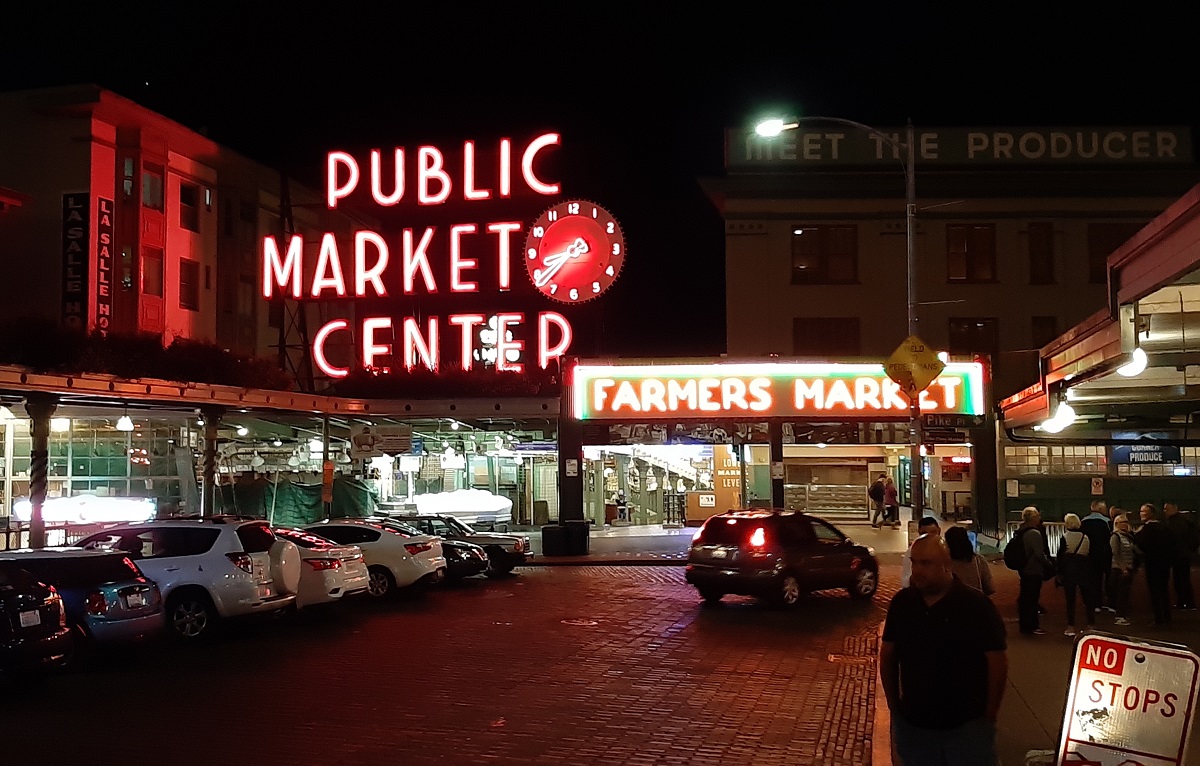
Pike Place Market is a famous and popular market that opened its doors in 1907. The market is located close to Elliott Bay, and freshly caught fish and agricultural products are sold here. The products in the market’s stalls are impressive to look at in their range and size, as is the case with the shellfish, for example.
Pike Place Market is also a fun place with a lively trading and always with a good chat with the customers. This is also where you can witness the fishmongers throwing fish, which they do between customers. The market has a number of eateries as well and small shops with souvenirs and various handicrafts.
An additional detail at Pike Place Market is that the world’s first Starbucks Coffee opened in this very market in 1971. There is still a Starbucks here, but it has moved to new premises since the premiere.
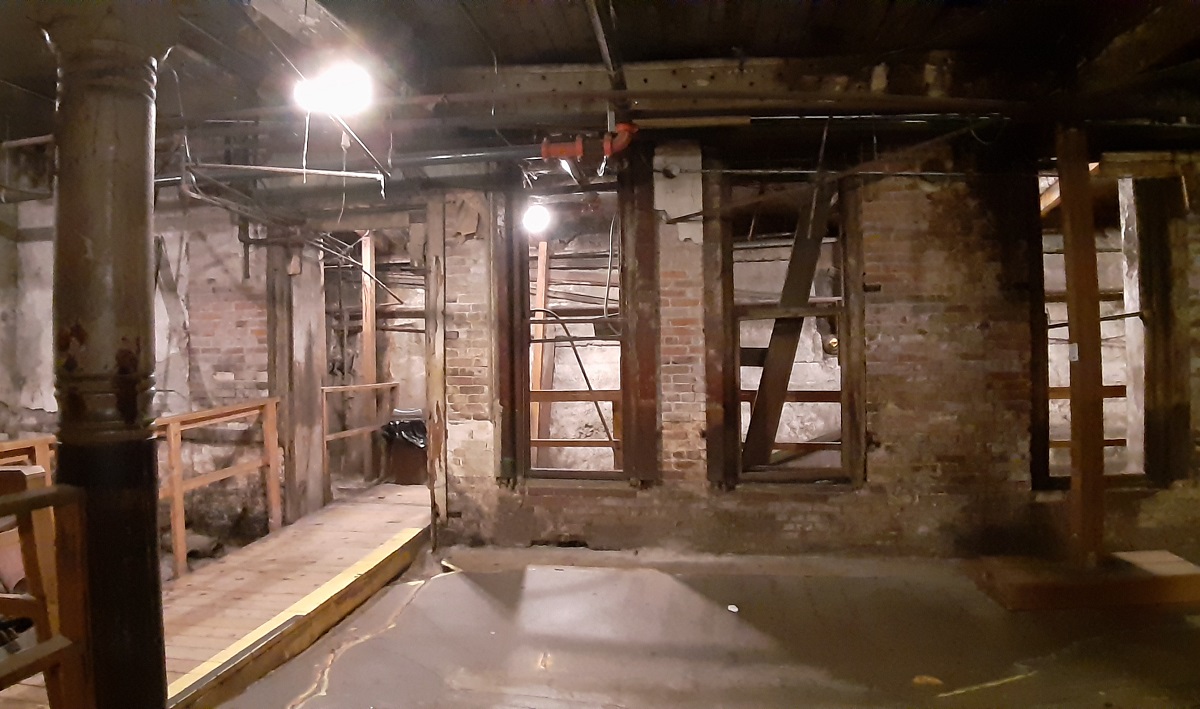
Seattle Underground is a unique place with an experience you can’t get anywhere else in the world. It all started in the Seattle of the time, where a great fire broke out on June 6, 1889. The fire ravaged and destroyed almost the entire downtown business district of Seattle. Most of the burned buildings were made of wood, and all the railway terminals and most of the city’s quays had also gone up in smoke. Therefore, the city had to start from scratch, so to speak.
With the impending reconstruction, the city council decided that the city center should be rebuilt one floor higher than before the fire. In this way, some of the floods that often hit this area could be avoided. Thus, the new constructions were started with a temporary facade on the ground floor and a future facade at the height of the first floor. Over the years, the streets were raised, and the old ground floor facades were turned into basement levels.
Today you can visit Seattle’s underground, which consists of the old streets and house facades that were used before the street level was raised. As a result, large parts of Seattle’s history before the fire in 1889 are today below street level, and you can visit the eerie-looking ruins of the city on a tour that starts in Doc Maynard’s Saloon from the 1890s.
After an introduction, you go down to look at old streets, sewer systems and of course the building ruins themselves, which have been here untouched since 1907, when the raising of the city was completed.
From Seattle’s waterfront, tour boats have sailed around the harbor and in Elliott Bay outside the city since 1949. On the trip you get information about the city’s history, and from the boat there is a wonderful view of Seattle’s modern skyline and the mighty mountains in the background.
You can also board an evening cruise where food is included. The illuminated buildings are very beautiful from the water side, and of course the Space Needle is visible as Seattle’s landmark. It is also possible to see the city from the water side by taking one of the ferries from the harbor to either Bainbridge or Bremerton. They are pleasant crossings where you can go ashore and experience relaxed districts compared to the hustle and bustle of the big city.
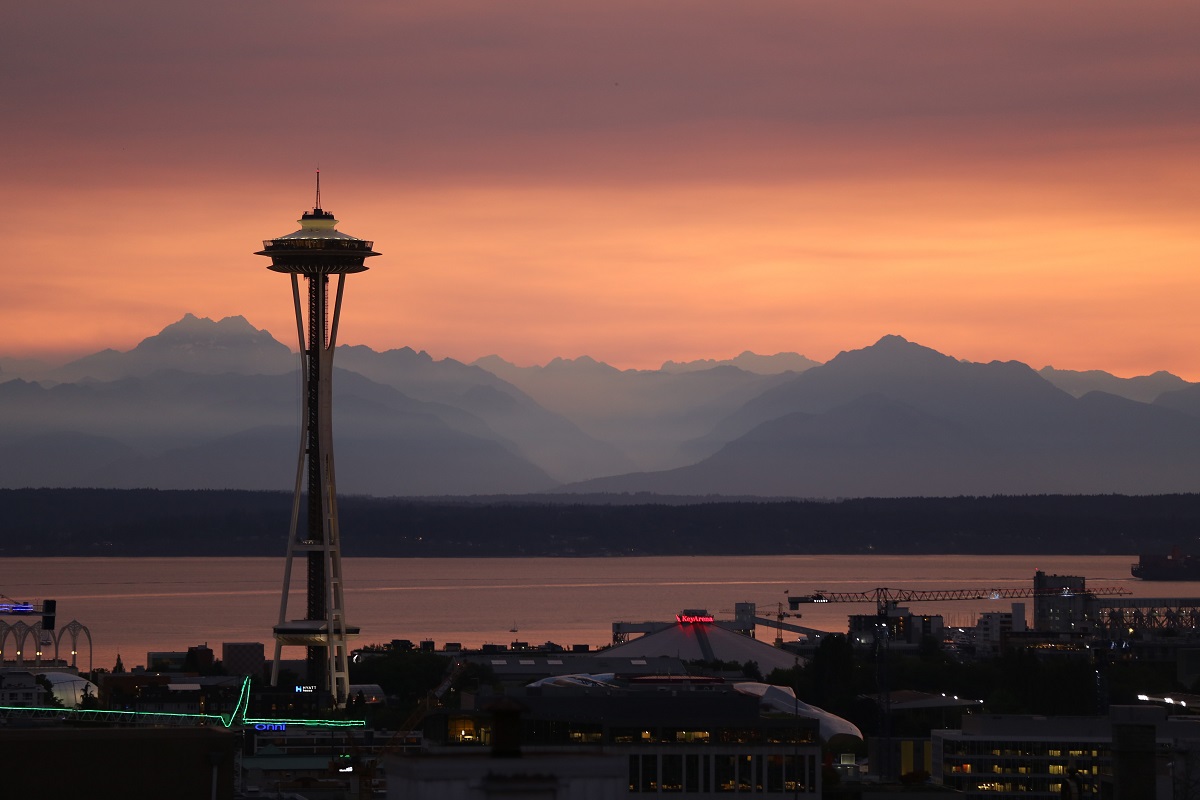
Space Needle is the landmark of Seattle, and the iconic observation tower is known from countless photos from the city. The Space Needle was built for the 1962 World’s Fair, called the Century 21 Exposition. The exhibition was open from April to October and was visited by around ten million people. In connection with the exhibition, many new buildings were erected, of which the Space Needle and Seattle’s monorail were among the most spectacular ones.
Space Needle is 184 meters high, and at 159 meters there is an observation deck and a revolving restaurant. From both places there is an unforgettable view of Seattle and the surrounding nature, where in clear weather you can see the 4,392 meter high Mount Rainier, which looks impressive as a backdrop for downtown Seattle. The elevator ride takes 41 seconds on the outside of the tower as an attraction in itself.
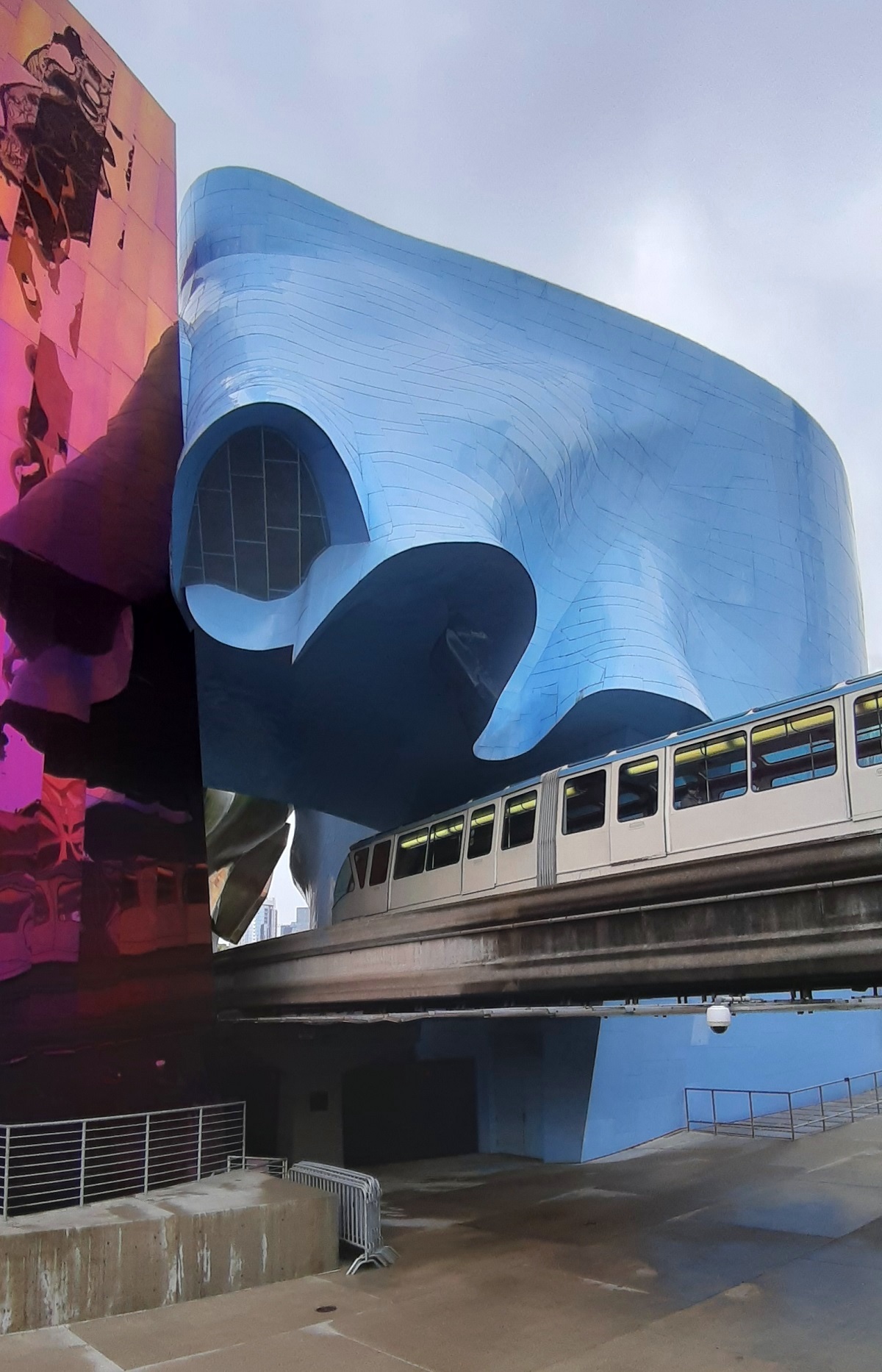
The Museum of Pop Culture is an impressive music museum where you can go on a true musical journey, regardless of whether you are interested in blues, jazz, hip-hop, funk, pop, country or rock ‘n’ roll. Some of the exhibits are particularly focused on big stars and Seattle’s musical history, which has dominated and inspired the world of music over many years.
The museum is located in a very unique building, where strong colors and the undulating metal roof already before entering the museum make the visit something special. It was Frank Gehry who designed the beautiful building, which opened in 2000. Inside you can see, among other things, a 10-metre-high sculpture built from 600 guitars, and on the outside you can almost drive through the museum on a trip with the city’s monorail.
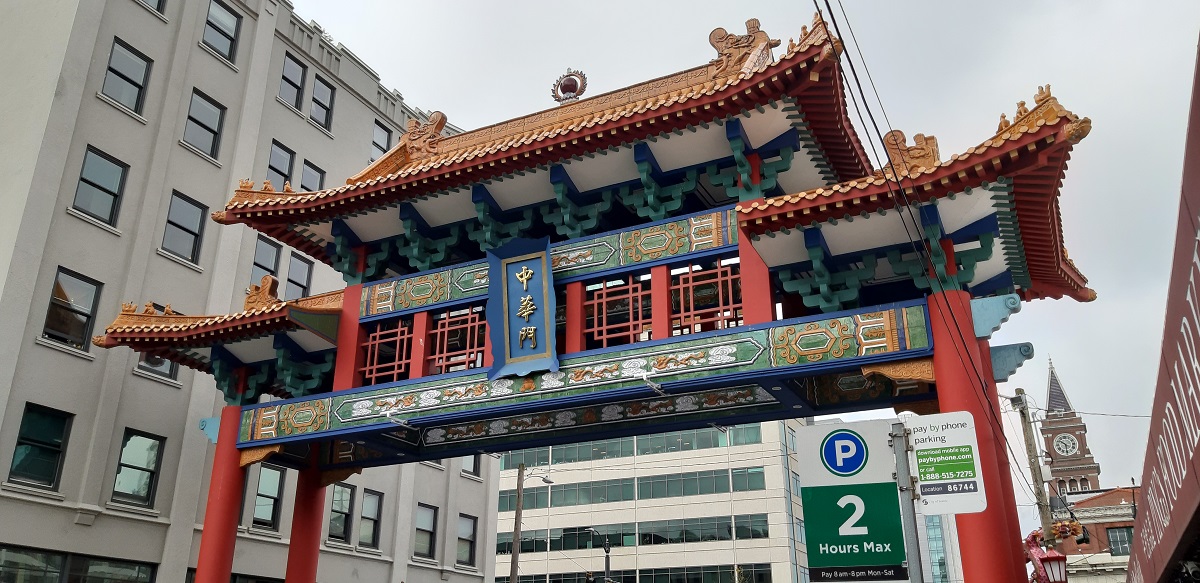
Chinatown is Seattle’s Chinese district, and it originated with Chinese immigrants who were the first Asians to settle permanently in Seattle. It happened in the 1860s, when labor was needed in fishing, sawmills and for railroad construction. The job opportunities attracted Chinese, as was also the case in other North American cities.
Chinatown slowly grew through the many visitors who flocked to the city, and to this day it is still strongly influenced by Chinese traditions and culture. Here are Chinese shops, markets, restaurants, and you can also visit a museum about the history of the district and its inhabitants.
To this day, the name Klondike makes people think of the gold rush in the 1800s, and the same associations were given to many in the late 1800s, when large gold discoveries were made in the Klondike River at Canadian Dawson City. In 1897, word of the gold discoveries reached Seattle, and in the years 1897-1898, tens of thousands of gold rush-stricken people traveled through Seattle on their way north to the gold fields.
In Seattle, the travelers bought food, clothing, equipment and other necessities for the gold rush, and it gave income to the city and helped financially a large scale development. At the Klondike Goldrush National Park museum, you get an insight into the Klondike gold rush and the impact it had on Seattle. You can also follow the trail of the gold rush to the north in, for example, the city of Skagway, where there is also a section of the Klondike Goldrush National Park.
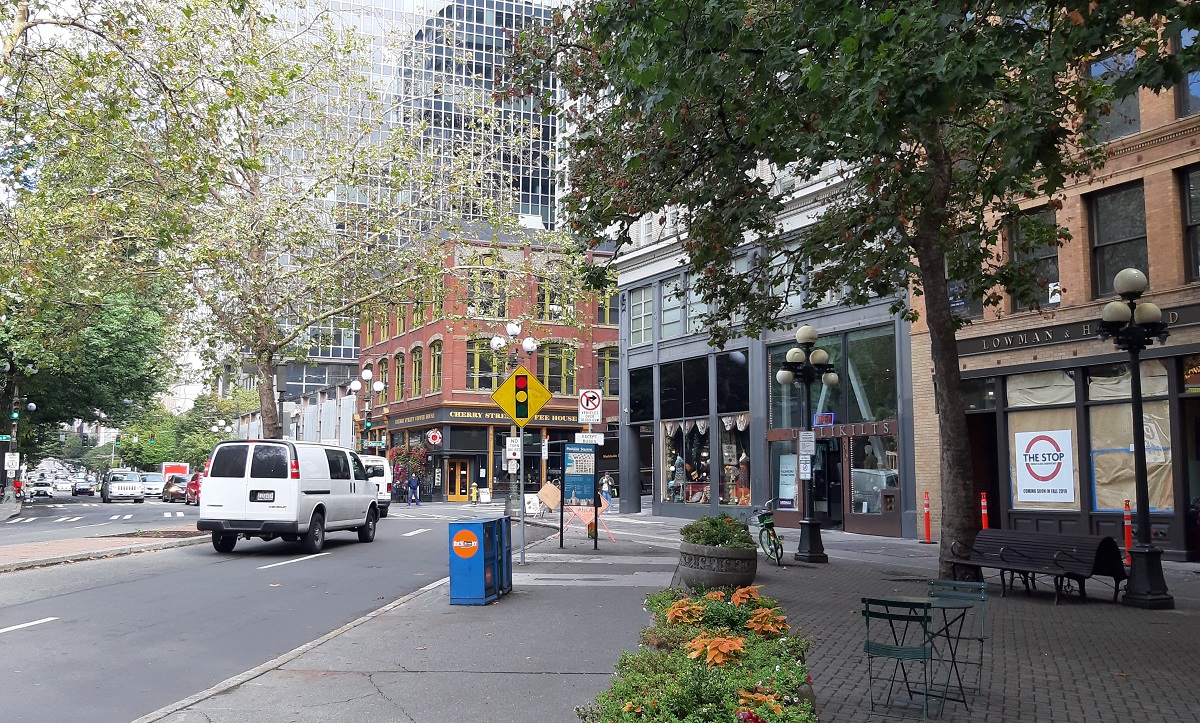
Pioneer Square is located in the middle of Seattle’s historic center, a large part of which was destroyed by the great fire in 1889. Since then, the district around the square has been rebuilt in mainly the same style as before the fire, and Pioneer Square emerged with the new buildings as Seattle’s center.
You will find a nice environment in Pioneer Square, and in the middle of the square you can see a totem pole from the Tlingit Indian tribe. There is an elegant and rebuilt pergola as well. You can also walk around the sidewalks around Pioneer Square, where in many places glass stones are embedded in the pavement. They are stones that gave light to the city’s old street plan, which lies one floor below today’s Seattle.
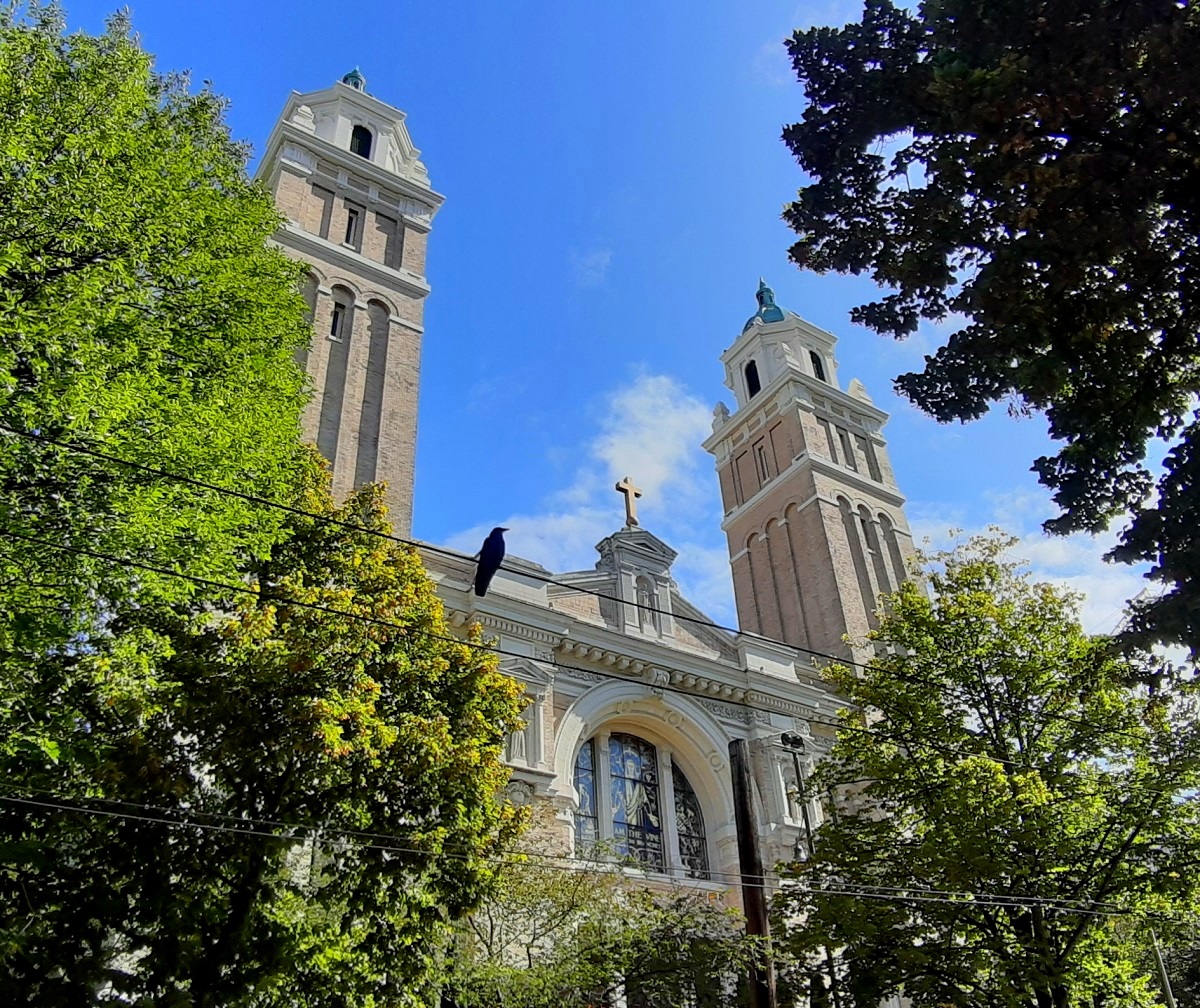
Saint James Cathedral is Seattle’s Catholic cathedral and as such is the seat of the city’s archbishop. The need for a newly built cathedral arose in 1903, when the then bishop Edward O’Dea decided to move the seat from the city of Vancouver in the southern part of the state of Washington to the larger city of Seattle. He acquired the land in 1903 and started planning of the new building the following year.
Construction began in 1905, and the church was completed two years later. The style was inspired by the Renaissance, and a characteristic part of the construction was the two twin towers of 51 meters in height and the dome of the church, which reached 37 meters. The towers still stand, while the dome collapsed in 1916 under the weight of snow after heavy snowfall and was not rebuilt.
Seattle Aquarium is in its right element at the waterfront in the city’s harbor. It opened in 1977 and offers many experiences. Here, for example, are aquariums with recreations of the seas around the state of Washington. They provide interesting knowledge about both animal life below and above water and about the importance of some of nature’s forces such as waves and tides.
Among other things, you can experience a salmon staircase that shows the salmon’s path during the season. The salmon is a multi-species fish that, along the American Northwest Coast up to Alaska, flocks to the area’s rivers to spawn. In this way, you can learn more about the fish important to the area, and there are also other local fish and an aquarium with a tropical reef.
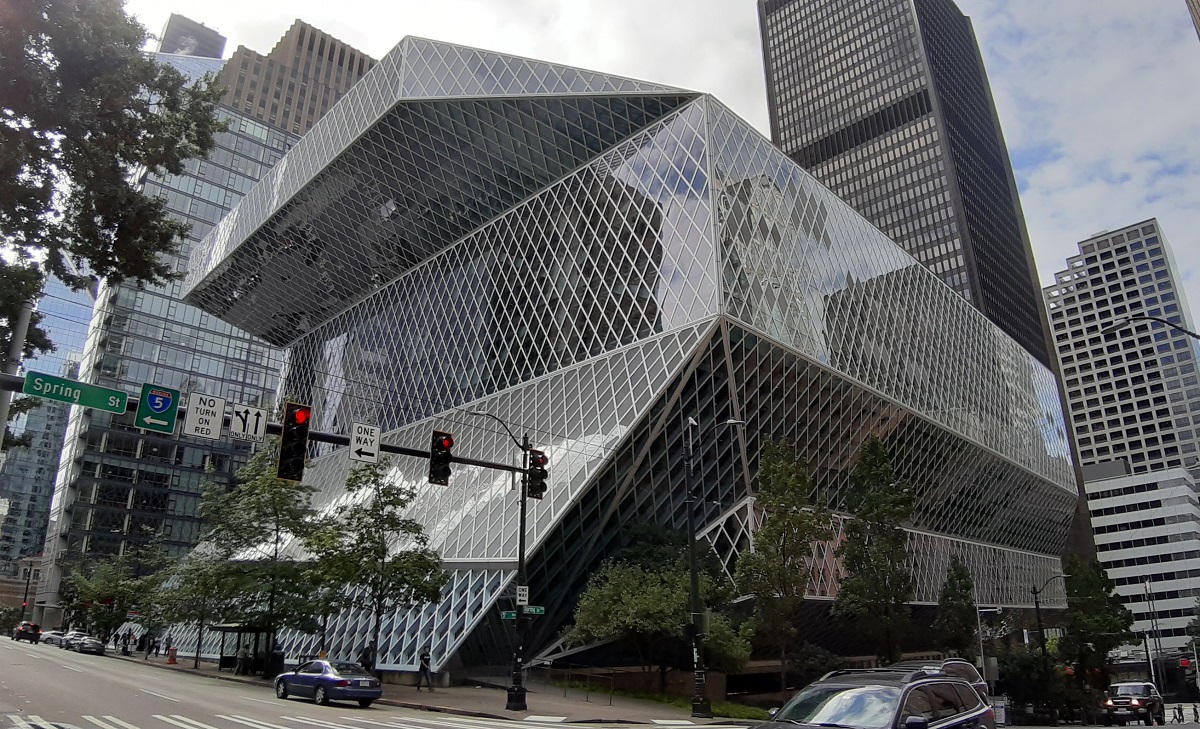
The Seattle Public Library is Seattle’s great public library, and it stands out in the streetscape as one of the city’s greatest architectural experiences. The 56 meter high building was constructed in an exterior of glass and steel that was joined together in a unique combination of broken surfaces.
The construction gives a special effect here in the middle of several other modern and more traditionally designed buildings. The library opened in 2004 and is very popular among the city’s citizens. It is easy to understand if you enter the building, where there are some very elegant and spacious halls.
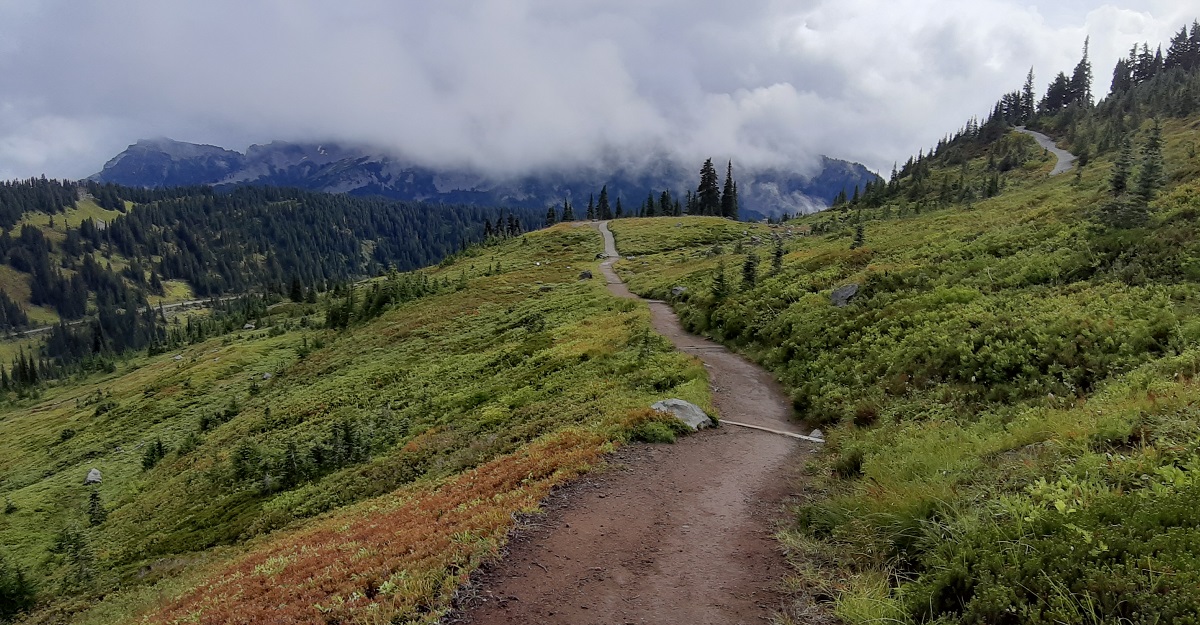
Mount Rainier is the highest peak in the Cascade mountain range east of Seattle. A national park was established in the area around the 4,392 meter high mountain, which is rich in a very beautiful variety of nature.
In the national park, there are as many as 26 glaciers, which are fed every year by the winter’s massive snowfall. Close to the snow line in the harsh climate, you can find alpine flowers. In the winter, you can also ski in the Crystal Mountain and White Pass Village areas.
In addition to many beautiful hiking trails, lakes and panoramic views, the forested areas have a fine representation of the region’s wildlife. You can meet bears, moose, mountain goats, and other animals.
At the foot of Mount Rainier, you can take a ride on old steam trains on the Mount Rainier Scenic Railroad. A trip from Elbe to Mineral Lake takes 1½ hours and is approximately 20 kilometers long. You can either take a train back immediately or stay in the lovely area and take a later departure.
At the Washington State History Museum, you can go on a foray through historical figures and events that have left their mark on Washington State’s development and world history. The exhibition is excitingly structured with a lot of interactivity and storytelling.
At the museum, there are permanent exhibitions about the cultures of the indigenous peoples, Black Washington and about many of the people who have moved here over time. You can also see changing exhibits, and the museum also has a large model railroad built around Tacoma Union Station.
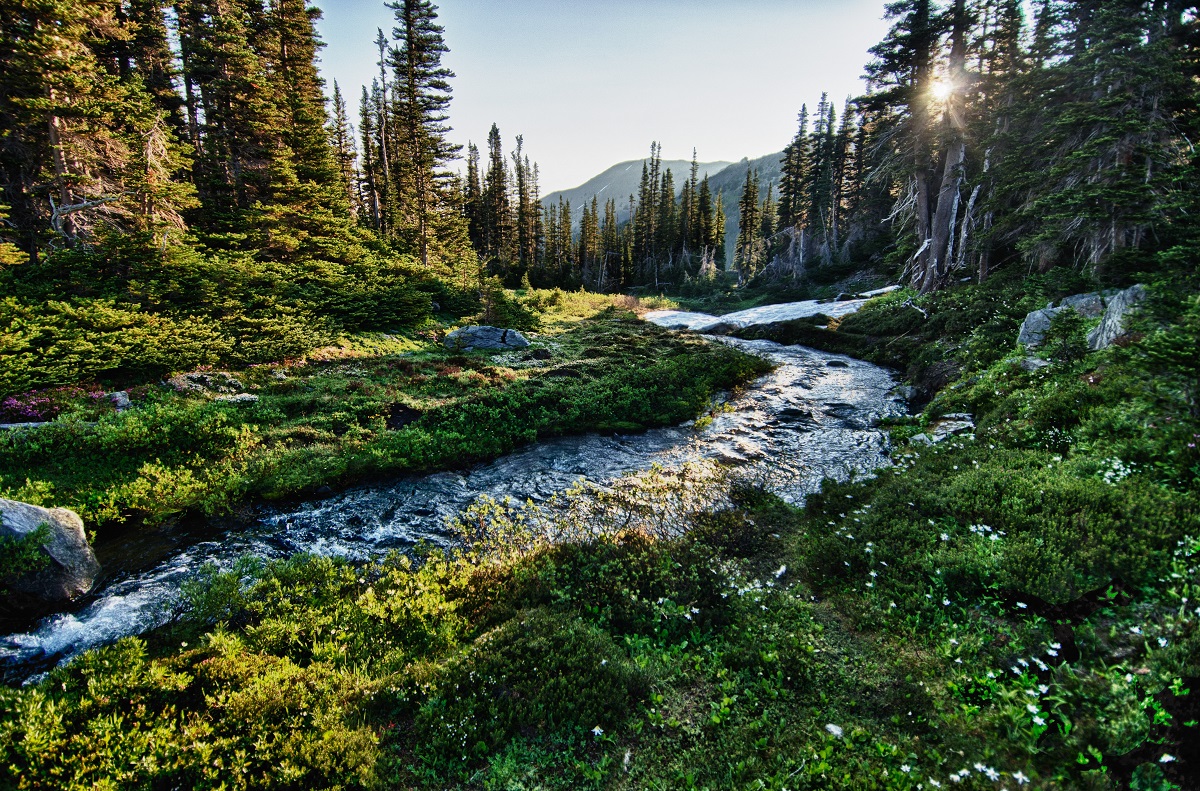
Olympic National Park is a park in the center of the Olympic Peninsula, which is immensely beautiful with its rich nature. The area is characterized by temperate rainforest with a great variety of both plant and animal life. On the countless hiking trails, there are many beautiful panoramic views, and you can find a number of different berries. There are also mountains with glaciers here.
The road to the national park can begin with a boat trip from Seattle’s harbor to Bainbridge Island on the opposite side of Puget Sound. The trip takes 35 minutes and is a nice excursion in itself. Alternatively, you can drive south around the strait, where you will then pass through Washington state’s capital, Olympia. You can take this tour to enjoy the city’s beautiful location, cozy atmosphere and the Capitol building.
Seattle is home to Boeing, which together with European Airbus are the world’s largest aircraft manufacturers. A trip here is impressive due to the fascination of flight, the high-tech capabilities and the huge assembly halls, where you can experience the 777 and 787 aircraft types, the latter nicknamed the Dreamliner.
The tour starts in the Future of Flight museum, where you can take a closer look at subjects within the history and future of flight. On the Boeing tour, you get information about Boeing’s history and get an introduction to the interesting process of aircraft production.
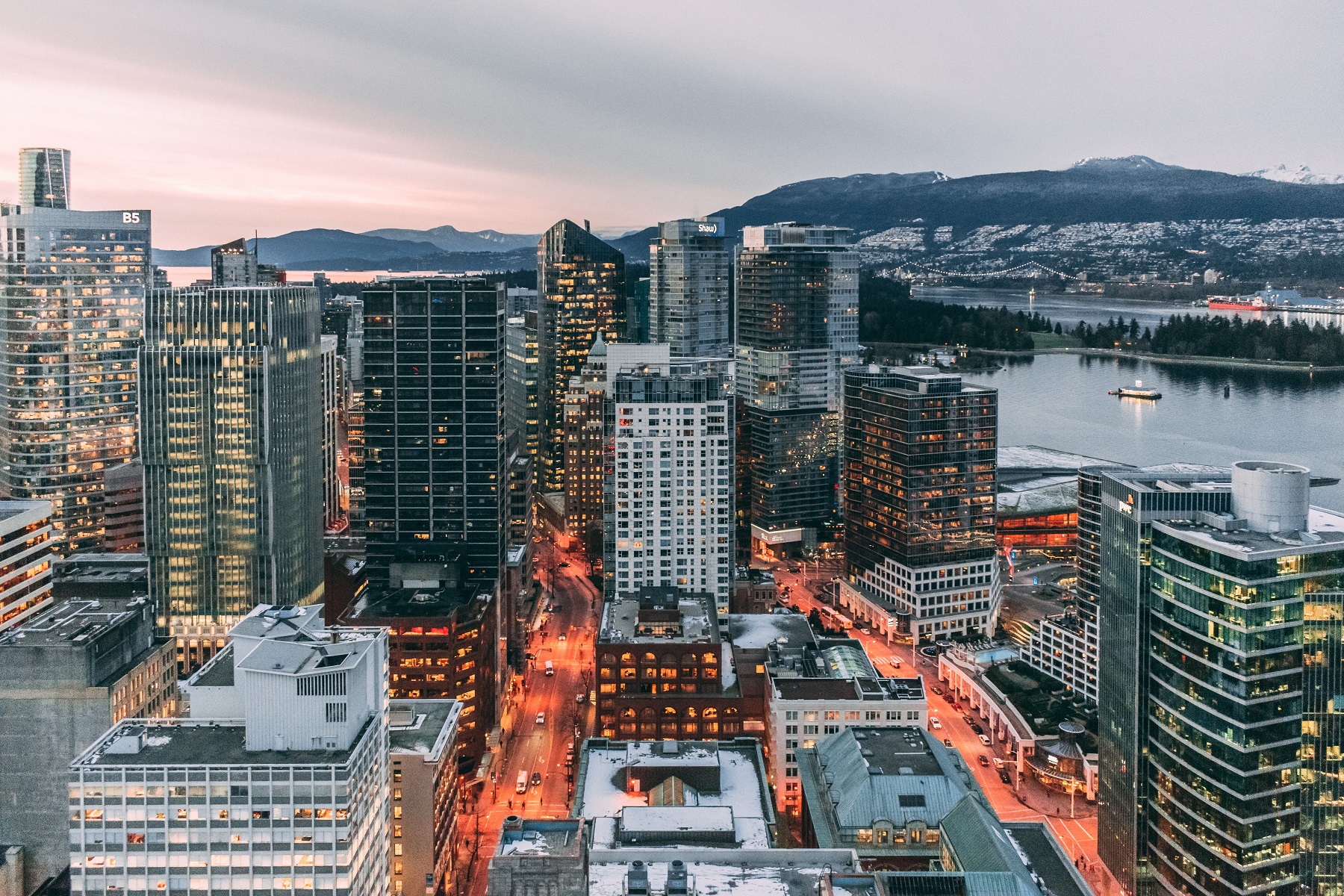
Vancouver is a metropolis in Western Canadian and it as arguably one of the most beautifully located cities in the world, and nature alone in and around it makes any trip to here an unforgettable experience.
Vancouver is named after George Vancouver, who was the first European to come ashore in the area. It happened in 1792, and since then a colossal development has taken place here. Vancouver is one of Canada’s largest cities, and it is the economic and tourist locomotive of British Columbia; sharply followed by cruises and trips to the Victoria and Rocky Mountains, which are all easy accessible from Vancouver.

Portland is the largest city in the US state of Oregon. The town’s history began with the many settlers who arrived at the Willamette Valley area in the 1840s. The town of The Clearing grew between Oregon City and Fort Vancouver. In the following years, Asa Lovejoy and Francis W. Pettygrove acquired the land around the town, and they changed the name to Portland after tossing a coin for the name.
After this, development proceeded quickly in the well-located city. In 1851, the town had a population of more than 800, growing to over 46,000 in 1890 and nearly 300,000 in 1920. In 1905, Portland hosted the Lewis and Clark Centennial Exposition, which attracted 1.6 million visitors.
1601 Third Avenue
500 Pine Street
nordstrom.com
Sixth Avenue, Pine Street
Pike Place
pikeplacemarket.org
4500 25 Avenue NE
uvillage.com
633 Southcenter Mall
400 Pine Street
westlakecenter.com
ine Street, Pike Place, Pioneer Square, the streets between Stewart Street, University Street, Forth Avenue, Seventh Avenue
Burke Museum of Natural History
17th Avenue NE
washington.edu/burkemuseum
Future of Flight (Boeing Tour)
8415 Paine Field Blvd, 45 km N
futureofflight.org
Seattle Aquarium
1483 Alaskan Way
seattleaquarium.org
Wild Waves & Enchanted Village
36201 South Enchanted Parkway
sixflags.com
Woodland Park Zoo
Woodland Park
zoo.org
visitseattle.org
cityofseattle.net
Seattle area has been inhabited by Native Americans for about 4,000 years. They lived scattered in the area, and by the middle of the 19th century there were thirteen Native American villages in the present Seattle urban area.
Among the most well-known of the indigenous population is Chief Si’ahl, who lived from about 1780 to 1866. His person and deed made the town named after him in the Anglophysized form of Seattle.
The first European in the area was George Vancouver, who came here in May 1792 during his expedition to the Northwestern American Pacific coast in the years 1791-1795.
However, it took a few years before a permanent European settlement was established. It happened in late September 1851, when two separate sites were established almost at the same time. At Alki Point, the first came from a group led by Arthur Denny and erected a hut, while Luther Collins followed established farming in present-day Georgetown. The sites on the bay of Elliott Bay were good due to the well protected location.
Initially, Seattle evolved to be a hub for the timber industry, from which logs and later processed timber were shipped to San Francisco in the first place. Throughout the present-day Seattle area, forests with trees up to 100 feet in height stood, and the good economy of natural raw materials quickly formed the basis for greater urban development.
Seattle officially became a city with the following rights on January 14, 1865. At that time, approximately 350 residents lived here. That figure had risen to about 1,000 when the city’s status was renewed on December 2, 1869.
The following decades saw tremendous growth in Seattle and the area. In 1873, the Northern Pacific Railway decided to carry their transcontinental route to the village of Tacoma southwest of Seattle instead of the growing city to the northeast.
Seattle tried to get other operators into the city, and it succeeded in 1884, when the Great Northern Railway primarily established freight traffic to the city. It was supposed to go until 1906, before Seattle got a larger passenger train station and thereby rail traffic.
The 1880s became the decade when trams were introduced, educational institutions were founded, and the sewer system and street network were established. The city was becoming a major regional city.
On June 6, 1889, the city was hit by a major fire that destroyed nearly the entire business district. All the railway terminals and most of the city’s quays had also gone up in smoke.
Most of the burned buildings were built of wood, and after the fire, building regulations on stone buildings were introduced. The burned-out center was rebuilt with new and larger construction in a short space of time, which meant that the city’s population, due to the many jobs in the construction industry, increased from 25,000 to 40,000 in just one year.
The 1890s, despite a general economic decline in the United States, became a decade of growth in Seattle several times. This was not least due to the fact that in August 1896 gold was found in the Canadian Klondike. Seattle was logistically well-positioned, and the city became the one-to-the-next shipping location for fortune knights from across the United States, as well as a base for supplies to several raw material areas in Canada and Alaska. This gave the city further economic growth and also a massive immigration, with many in the city benefiting from those who became rich by, for example, gold finds.
In the first half of the 20th century, Seattle established its role as a leader in the northwestern United States. Culturally, the city flourished and industries shot up with many jobs.
The gold rush had already brought new wealth to the city from the turn of the century. In the markets, there was a lot of shopping, and in the same decade cultural life also developed, as it should in a real metropolis. For example, the city’s symphony orchestra was established in 1903.
The harbor was Seattle’s economic lifeblood. It was here that transports created wealth for large parts of the city, and Seattle began to develop publicly owned port areas early in comparison to many other cities, which, instead of chaotic growth, could ensure planning and expansion in favor of the city.
One of the highlights of the time was the Alaska-Yukon-Pacific Exposition World Exhibition, which was held in Seattle in 1909. The exhibit focused on developments in the Northwest Pacific region.
In the context of World War I, trade across the Pacific grew and, industrially, it caused a boom in shipbuilding. With the end of the war, the demand for ships dramatically diminished and Seattle’s almost uninterrupted growth came to an end.
From a WWII war economy, growth in Seattle in the decades following the end of the war turned to not least the Boeing aircraft factory and its ever-increasing success with civil aircraft.
In 1962, Seattle hosted the World Exhibition, which included the landmark Space Needle, among others. This also provided a saltwater injection for new investment in a stagnant downtown area that was once again growing after the show.
The following decades created many new businesses, not least the worldwide Microsoft, who moved here from Albuquerque in 1979. Others in the IT and pharmaceutical industries followed suit.
Culturally, Seattle was also marked on the world map with recordings of television series such as the X-files and well-known musicians such as Nirvana and Kurt Cobain, who almost founded a new genre centered in Seattle.
Overview of Seattle
The American metropolis of Seattle in the northwestern corner of the United States is one of the technological centers in the country. At the same time the city has been particularly significant for recent American music. Of course, there are many sights as well, and the fact that the city is surrounded by magnificent scenery is something that just adds extra perspectives on a trip to here.
Seattle’s history is intriguing, for example, it has been the transit site for the gold diggers on their way to Canadian Klondike, which you can get acquainted with at one of the city’s museums. Seattle burned down in 1889, creating a new start for the city after the fire by raising the street level. You can see Seattle from before 1889 in the underground today. Later on, Seattle hosted the World Exhibition in 1962, and it also left its mark on the city’s skyline.
About the upcoming Seattle travel guide
About the travel guide
The Seattle travel guide gives you an overview of the sights and activities of the American city. Read about top sights and other sights, and get a tour guide with tour suggestions and detailed descriptions of all the city’s most important churches, monuments, mansions, museums, etc.
Seattle is waiting for you, and at vamados.com you can also find cheap flights and great deals on hotels for your trip. You just select your travel dates and then you get flight and accommodation suggestions in and around the city.
Read more about Seattle and the USA
Buy the travel guide
Click the “Add to Cart” button to purchase the travel guide. After that you will come to the payment, where you enter the purchase and payment information. Upon payment of the travel guide, you will immediately receive a receipt with a link to download your purchase. You can download the travel guide immediately or use the download link in the email later.
Use the travel guide
When you buy the travel guide to Seattle you get the book online so you can have it on your phone, tablet or computer – and of course you can choose to print it. Use the maps and tour suggestions and you will have a good and content-rich journey.
Pike Place • Space Needle • Gold Rush • Pioneer Square • Volcanoes
Overview of Seattle
The American metropolis of Seattle in the northwestern corner of the United States is one of the technological centers in the country. At the same time the city has been particularly significant for recent American music. Of course, there are many sights as well, and the fact that the city is surrounded by magnificent scenery is something that just adds extra perspectives on a trip to here.
Seattle’s history is intriguing, for example, it has been the transit site for the gold diggers on their way to Canadian Klondike, which you can get acquainted with at one of the city’s museums. Seattle burned down in 1889, creating a new start for the city after the fire by raising the street level. You can see Seattle from before 1889 in the underground today. Later on, Seattle hosted the World Exhibition in 1962, and it also left its mark on the city’s skyline.
About the upcoming Seattle travel guide
About the travel guide
The Seattle travel guide gives you an overview of the sights and activities of the American city. Read about top sights and other sights, and get a tour guide with tour suggestions and detailed descriptions of all the city’s most important churches, monuments, mansions, museums, etc.
Seattle is waiting for you, and at vamados.com you can also find cheap flights and great deals on hotels for your trip. You just select your travel dates and then you get flight and accommodation suggestions in and around the city.
Read more about Seattle and the USA
Buy the travel guide
Click the “Add to Cart” button to purchase the travel guide. After that you will come to the payment, where you enter the purchase and payment information. Upon payment of the travel guide, you will immediately receive a receipt with a link to download your purchase. You can download the travel guide immediately or use the download link in the email later.
Use the travel guide
When you buy the travel guide to Seattle you get the book online so you can have it on your phone, tablet or computer – and of course you can choose to print it. Use the maps and tour suggestions and you will have a good and content-rich journey.

Chinatown is Seattle’s Chinese district, and it originated with Chinese immigrants who were the first Asians to settle permanently in Seattle. It happened in the 1860s, when labor was needed in fishing, sawmills and for railroad construction. The job opportunities attracted Chinese, as was also the case in other North American cities.
Chinatown slowly grew through the many visitors who flocked to the city, and to this day it is still strongly influenced by Chinese traditions and culture. Here are Chinese shops, markets, restaurants, and you can also visit a museum about the history of the district and its inhabitants.
To this day, the name Klondike makes people think of the gold rush in the 1800s, and the same associations were given to many in the late 1800s, when large gold discoveries were made in the Klondike River at Canadian Dawson City. In 1897, word of the gold discoveries reached Seattle, and in the years 1897-1898, tens of thousands of gold rush-stricken people traveled through Seattle on their way north to the gold fields.
In Seattle, the travelers bought food, clothing, equipment and other necessities for the gold rush, and it gave income to the city and helped financially a large scale development. At the Klondike Goldrush National Park museum, you get an insight into the Klondike gold rush and the impact it had on Seattle. You can also follow the trail of the gold rush to the north in, for example, the city of Skagway, where there is also a section of the Klondike Goldrush National Park.

Pioneer Square is located in the middle of Seattle’s historic center, a large part of which was destroyed by the great fire in 1889. Since then, the district around the square has been rebuilt in mainly the same style as before the fire, and Pioneer Square emerged with the new buildings as Seattle’s center.
You will find a nice environment in Pioneer Square, and in the middle of the square you can see a totem pole from the Tlingit Indian tribe. There is an elegant and rebuilt pergola as well. You can also walk around the sidewalks around Pioneer Square, where in many places glass stones are embedded in the pavement. They are stones that gave light to the city’s old street plan, which lies one floor below today’s Seattle.

Saint James Cathedral is Seattle’s Catholic cathedral and as such is the seat of the city’s archbishop. The need for a newly built cathedral arose in 1903, when the then bishop Edward O’Dea decided to move the seat from the city of Vancouver in the southern part of the state of Washington to the larger city of Seattle. He acquired the land in 1903 and started planning of the new building the following year.
Construction began in 1905, and the church was completed two years later. The style was inspired by the Renaissance, and a characteristic part of the construction was the two twin towers of 51 meters in height and the dome of the church, which reached 37 meters. The towers still stand, while the dome collapsed in 1916 under the weight of snow after heavy snowfall and was not rebuilt.
Seattle Aquarium is in its right element at the waterfront in the city’s harbor. It opened in 1977 and offers many experiences. Here, for example, are aquariums with recreations of the seas around the state of Washington. They provide interesting knowledge about both animal life below and above water and about the importance of some of nature’s forces such as waves and tides.
Among other things, you can experience a salmon staircase that shows the salmon’s path during the season. The salmon is a multi-species fish that, along the American Northwest Coast up to Alaska, flocks to the area’s rivers to spawn. In this way, you can learn more about the fish important to the area, and there are also other local fish and an aquarium with a tropical reef.

The Seattle Public Library is Seattle’s great public library, and it stands out in the streetscape as one of the city’s greatest architectural experiences. The 56 meter high building was constructed in an exterior of glass and steel that was joined together in a unique combination of broken surfaces.
The construction gives a special effect here in the middle of several other modern and more traditionally designed buildings. The library opened in 2004 and is very popular among the city’s citizens. It is easy to understand if you enter the building, where there are some very elegant and spacious halls.
Similar to Seattle Travel Guide